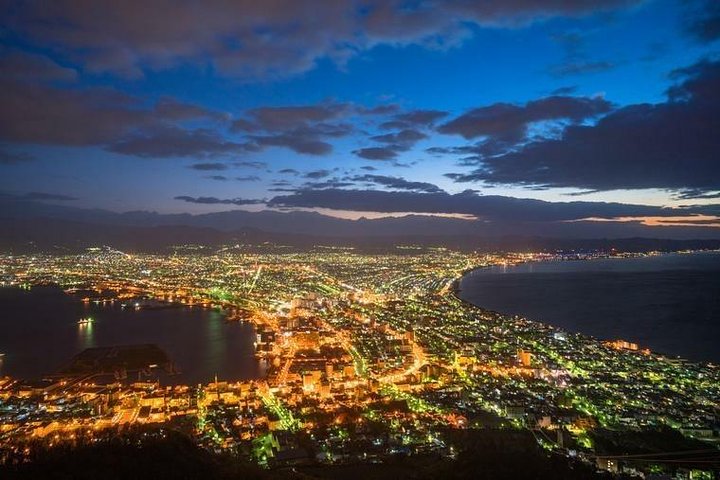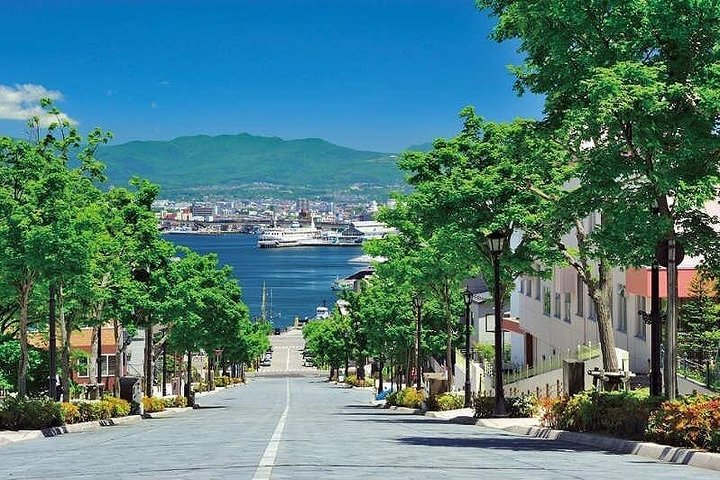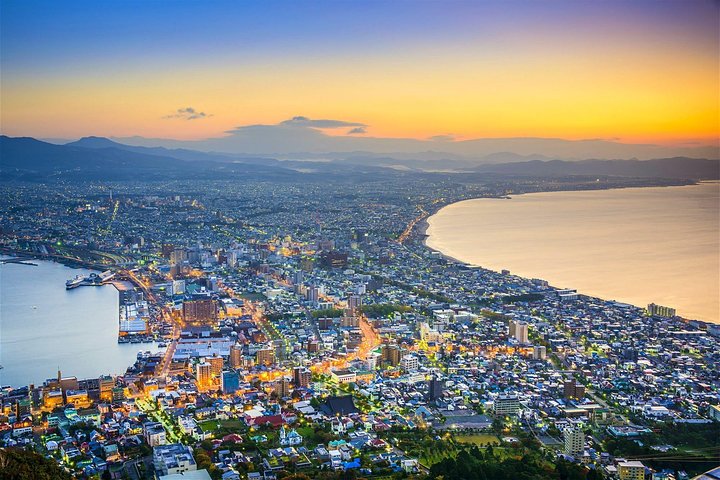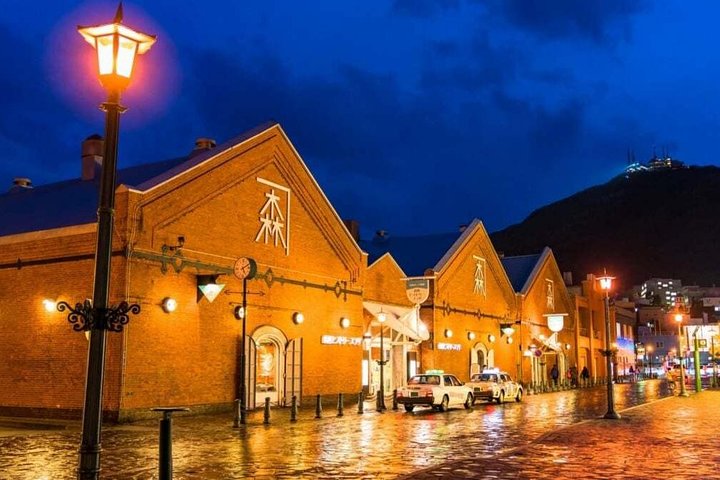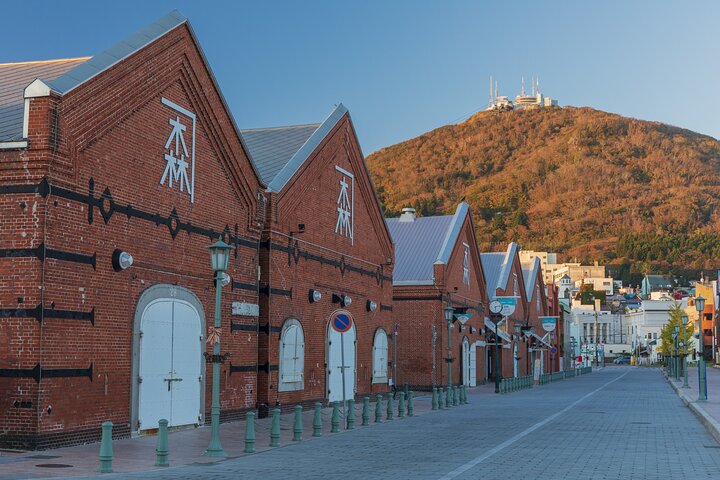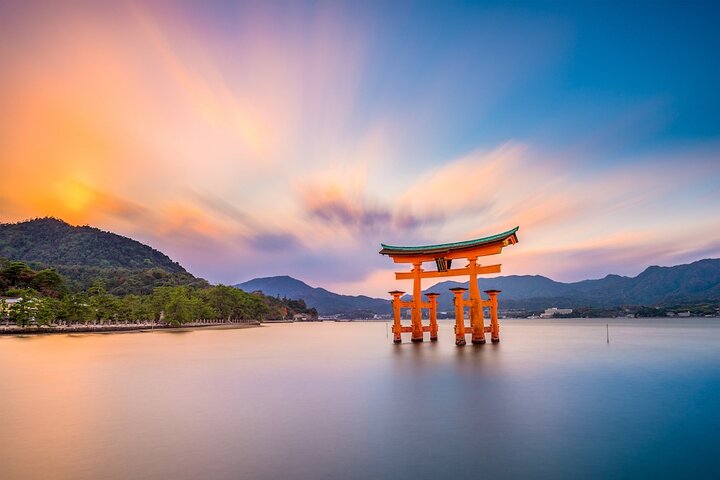Explore Hakodate’s rich history and culture with a private, customizable tour led by a licensed guide. Discover European architecture, churches, and more.
Explore Hakodate’s rich history and culture with a private, customizable tour led by a licensed guide. Discover European architecture, churches, and more.
- Mount Hakodate - Mount Hakodate (函館山, Hakodateyama) is a 334-meter-high, forested mountain situated at the southern tip of the peninsula where much of central Hakodate is found. The views from the mountain, especially on clear days and nights, are breathtaking and are considered one of Japan’s top three night views, alongside those from Nagasaki’s…
- Mount Hakodate - Mount Hakodate (函館山, Hakodateyama) is a 334-meter-high, forested mountain situated at the southern tip of the peninsula where much of central Hakodate is found. The views from the mountain, especially on clear days and nights, are breathtaking and are considered one of Japan’s top three night views, alongside those from Nagasaki’s Mount Inasa and Kobe’s Mount Rokko.
The summit, which can be reached by ropeway, bus, or car, offers various facilities including observation platforms (free of charge), souvenir shops, a café, and a cafeteria-style restaurant.
- Onuma Quasi-National Park - Onuma Park (大沼公園, Ōnuma Kōen), designated as a “quasi-national park,” is located just twenty kilometers north of Hakodate. It is renowned for its scenic, island-dotted lakes and the impressive volcano, Mount Komagatake.
Onuma Park is easily accessible for a day trip from Hakodate or as a stopover on the journey between Hakodate and Sapporo, as most limited express trains between the two cities stop at Onuma Koen Station, the central railway station.
- Goryokaku Park - Fort Goryokaku (五稜郭, Goryōkaku) is a large, star-shaped, Western-style fortress built in the final years of the Edo Period to defend Hakodate against the imperialist threat from Western powers. A few years later, it became the site of a civil war between the shogunate’s army and the superior forces of the newly established Meiji government.
After losing its military significance, the fort was converted into a public park in the 1910s. Over a thousand cherry trees were planted along its moats, making it one of Hokkaido’s premier cherry blossom viewing spots. The peak blooming season typically occurs in early May.
Admission
900 yen
- Hakodate Morning Market - The Hakodate Morning Market (函館朝市, Hakodate Asaichi) operates daily from 5 am (6 am during winter) until noon, just a short walk from JR Hakodate Station. The market spans approximately four city blocks.
Items for sale include various fresh seafood such as crabs (kani), salmon eggs (ikura), and sea urchin (uni), as well as fresh produce like melons. Numerous restaurants in the market area offer fresh seafood breakfasts, such as uni-ikura domburi.
- Motomachi - Hakodate’s harbor was one of the first to open to foreign trade in 1854 after Japan’s period of isolation ended. Consequently, many traders from Russia, China, and Western countries settled in Hakodate. Motomachi, located at the base of Mount Hakodate, became a favored district among these new foreign residents.
Today, the area still features many foreign-style buildings. Notable ones include the Russian Orthodox Church, the Old British Consulate, the Chinese Memorial Hall, the former branch office building of the prefectural government, and the old Hakodate Public Hall (closed from November 2018 to April 2021).
Admission
300 yen
- Kanemori Red Brick Warehouse - Towards the end of the Edo Period (1600-1867), Hakodate Port was among the first Japanese ports to open to international trade. Several red brick warehouses from that era still stand along the waterfront in Hakodate’s bay area and have been transformed into a charming shopping, dining, and entertainment complex.
The complex features a variety of trendy souvenir, fashion, interior, and sweets shops, as well as a restaurant, a beer hall, a wedding chapel, and sightseeing cruises of the bay.
- Bay Hakodate - The Bay Area facing Hakodate Port offers a wide view of the harbor. This area is lined with old red-brick buildings that have been converted into a distinctive shopping mall, inviting visitors to enjoy some shopping or a tea break.
- Hakodate Museum of Northern Peoples - The Hakodate Museum of the Northern Peoples is housed in a building that once served as the Japan Bank, constructed in 1926. The museum is dedicated to Ainu culture and provides a fascinating insight into this indigenous culture, which is not widely known outside Japan.
The museum also offers information about other indigenous groups in Japan, such as the Sakhalin, who originate from an island north of Hokkaido that is now part of Russia.
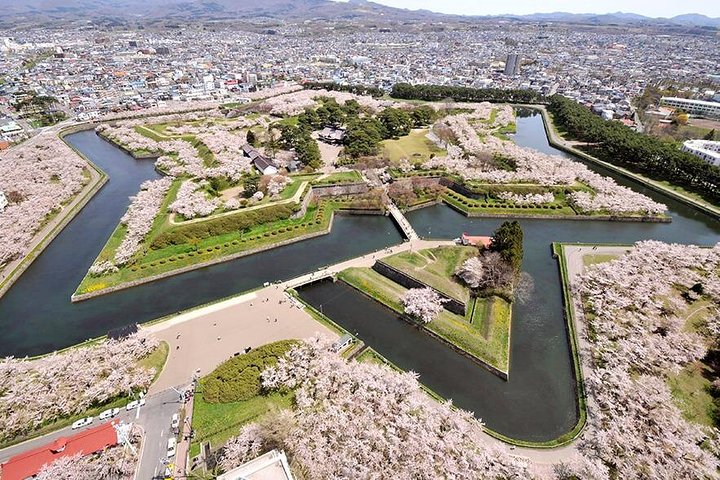
- Meet up with guide on foot within designated area of Hakodate
- Licensed Local English-speaking Guide
- Customizable Tour of your choice of 3-4 sites from ‘What to expect’ list
- Meet up with guide on foot within designated area of Hakodate
- Licensed Local English-speaking Guide
- Customizable Tour of your choice of 3-4 sites from ‘What to expect’ list
- Transportation fees, Entrance fees, Lunch, and Other personal expenses
- Private Vehicle
- You cannot combine multiple tour groups.
- Guide Entry fees are only covered for sights listed under What to Expect.
- Transportation fees, Entrance fees, Lunch, and Other personal expenses
- Private Vehicle
- You cannot combine multiple tour groups.
- Guide Entry fees are only covered for sights listed under What to Expect.
This value-packed journey with a government-licensed and seasoned tour guide offers a wonderful and efficient way to discover Hakodate!
Hakodate boasts a rich history of international trade and once hosted a small foreign community. This influence is visible in the European architecture, churches, and red-brick warehouses that can be admired from the…
This value-packed journey with a government-licensed and seasoned tour guide offers a wonderful and efficient way to discover Hakodate!
Hakodate boasts a rich history of international trade and once hosted a small foreign community. This influence is visible in the European architecture, churches, and red-brick warehouses that can be admired from the nostalgic streetcar that tours the city.
Share your interests, and a personalized six-hour tour will be crafted just for you!
Note1: Please choose your must-see locations from a list provided in the tour information to create your personalized itinerary.
Note2: The National Government Licensed Guide Interpreter certification, issued by the Japanese government, requires a comprehensive knowledge and understanding of Japanese culture and history.
- This is a walking tour. Pick up is on foot.
For a full refund, cancel at least 24 hours before the scheduled departure time.
For a full refund, cancel at least 24 hours before the scheduled departure time.




